The grey Siberian cat is extremely popular and people who own one of these magnificent creatures are often crazy about them. If you’ve ever seen one of them, you’ll surely know why. Their beautiful, mysterious grey color combined with their fluffy, thick fur really makes them stand out and gives them a unique appearance that’s not seen very often.
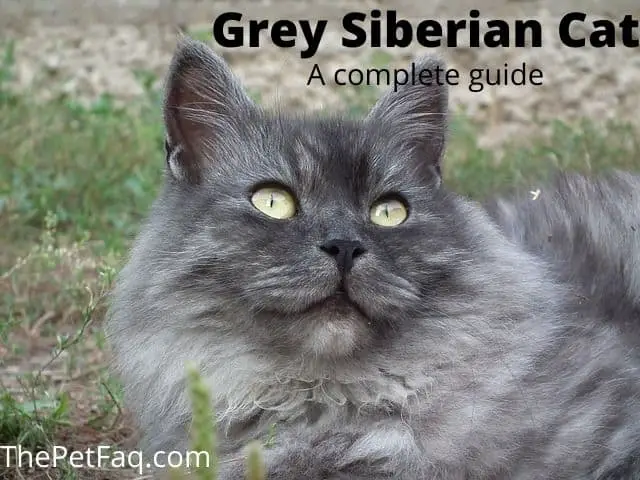
However, did you know that grey Siberian cats officially do not exist? What people often believe to be Grey Siberian cats are officially labeled by the Cat Fancier’s Association as “blue Siberian cats”, more about that a little later.
A brief history of the Grey Siberian Cat
Grey Siberian cats have a long history with many unknowns. They’re an ancient breed from the forests of Siberia in Russia. As you might know, Siberia can be a cold place, and thus, the Siberian cat evolved to have a thick, water repellent, triple coat to keep them warm in the cold winter months.
The breed was first imported into the United States in 1990. However, although the breed is gaining popularity in the US, they’re still quite rare due to how expensive it is to import cats from Russia.
Interestingly enough, what most people deem to be Grey Siberian cats are officially known as blue Siberian cats. The reason for this is that while they primarily have a grey appearance, they often have a bit of a blue sheen to their fur.
Can a Siberian Cat be grey?
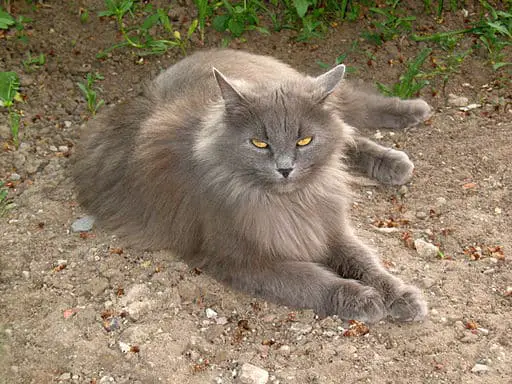
Officially, Siberian cats can not be grey. According to the color chart of the Cat Fancier’s Association, grey is not an officially recognized color.
Nevertheless, you often see people describe their Siberian cat as “grey”. The reason for that is that while Siberian cats might not officially be recognized in the color grey, they are recognized in the color blue. This color closely resembles grey and because of that blue Siberian cats are often referred to unofficially as being “grey”. You can look at the pictures in this article yourself, many of them clearly look more grey than blue. A similar situation occurs with orange Siberian cats. They’re officially classified as red but are often referred to as being orange.
To put it simply, the color grey is not officially recognized by the CFA. Nevertheless, many Siberian cats have blueish coats that closely resemble the color grey and are often referred to as “grey Siberian cats”.
Are grey Siberian cats rare?
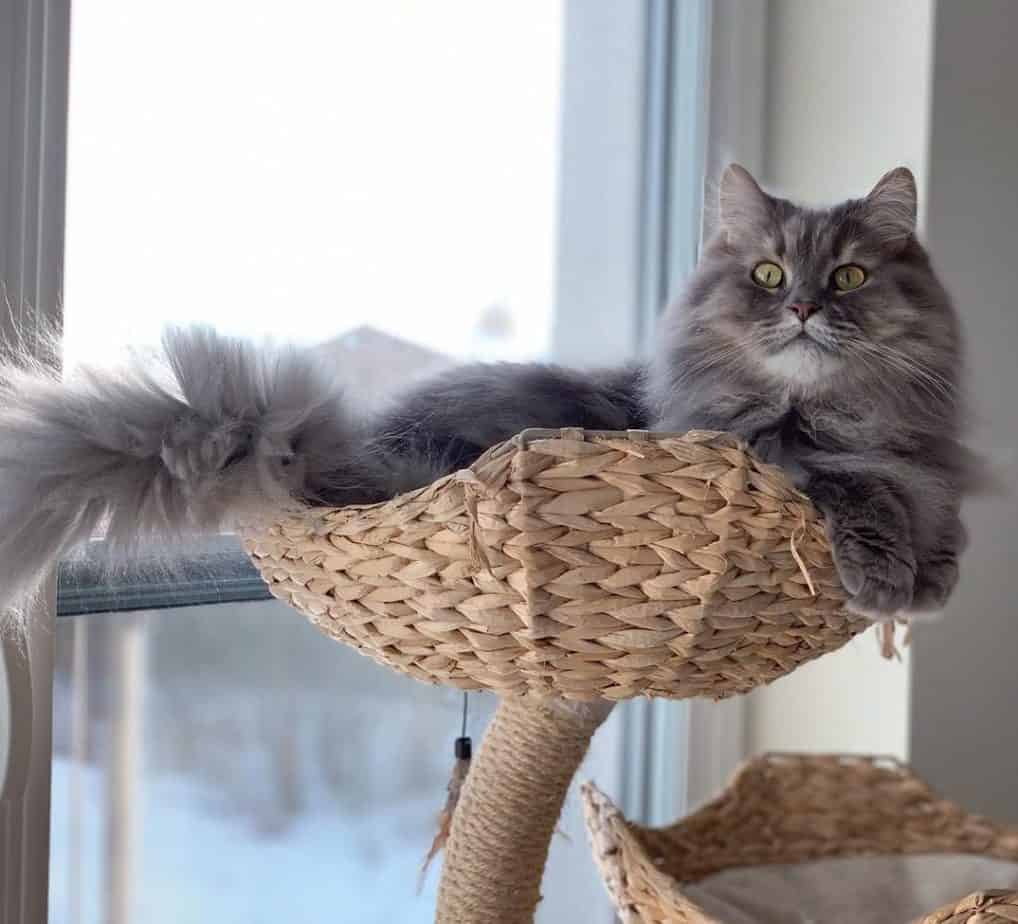
Grey Siberian cats, which as we now know are actually blue, are not all that rare. One of the reasons for that is that there are many different kinds of blue Siberian cats. Here is a useful chart of some of the possible grey (blue) Siberian cats that you can find according to the Cat Fancier’s Association, along with a short description:
| Color | Description |
| Blue tabby | Tabby Siberian with grey coloration |
| Solid Blue | A solid blue/greyish color |
| Blue-cream smoke | A grey/cream smoke mixture |
| Blue smoke | Grey with the tips being a different color |
| blue-cream | A mixture of grey and cream coloration |
| Blue-cream-white | A combination of grey, cream, and white colorations |
In addition, the CFA also recognizes the following grey Siberian cats:
- Blue Chinchilla
- Blue Shaded
- Blue-white
- Blue-silver tabby
- Blue golden tabby
- Blue-silver patched tabby
- Blue patched tabby
- Blue point-white
- Blue Lynx-point
- Blue point
As you can see, that’s quite a list of possible combinations so it makes sense that grey Siberian cats are not as rare as other colorations, such as the white Siberian cat.
Grey Siberian cat personality
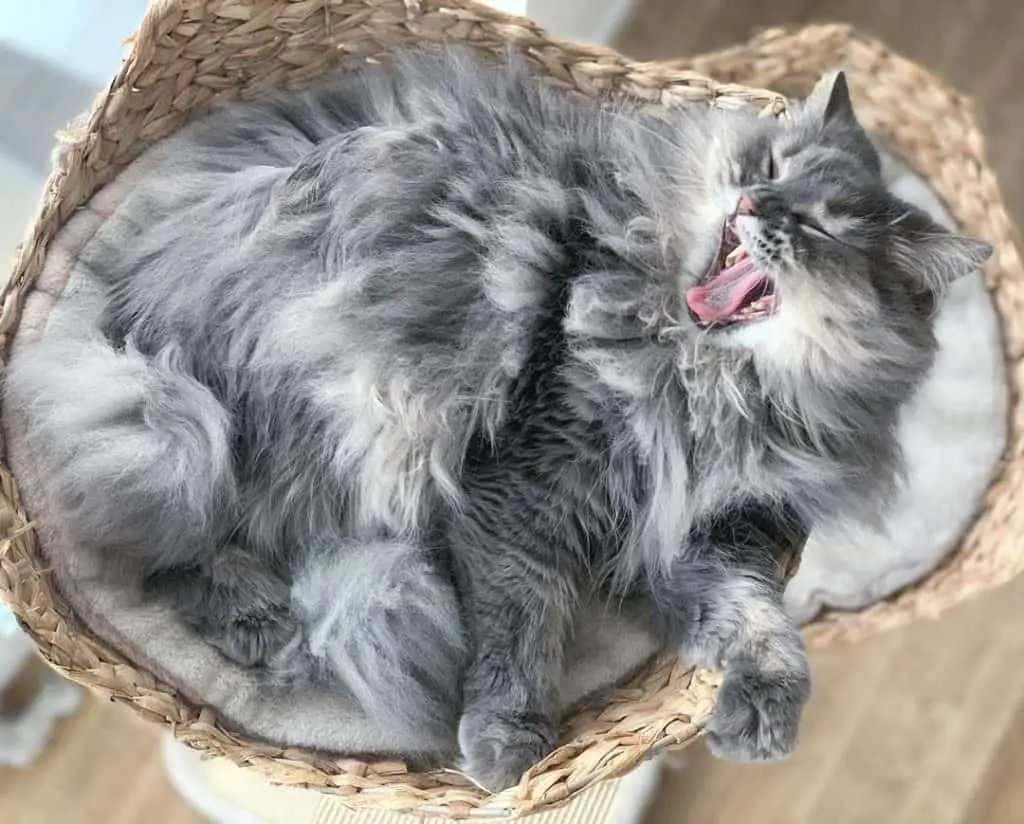
There’s a long debate on whether or not the color of a cat impacts its personality. Some people swear that color makes a huge difference but this has never been scientifically proven. Personally, I tend to believe that color does not make an impact on a cat’s personality, at least, definitely not as much as the breed, how the cat is treated, and its own individual nature.
According to Mikel Delgado, a student a Berkely University: “there is little evidence that these perceived differences between differently colored cats actually exist.”
On the whole though, Grey Siberian cats, just like other colored Siberians, are super affectionate and playful. It takes about 5 years for them to fully mature so they stay playful a lot longer than other breeds. Furthermore, they usually get along well incredibly well with other animals and children, making them excellent pets for families. An interesting trait of the Siberian is that while most other breeds absolutely despise water, for some reason the Siberian loves it and actually seeks out water to play in.
Grey Siberian cat price
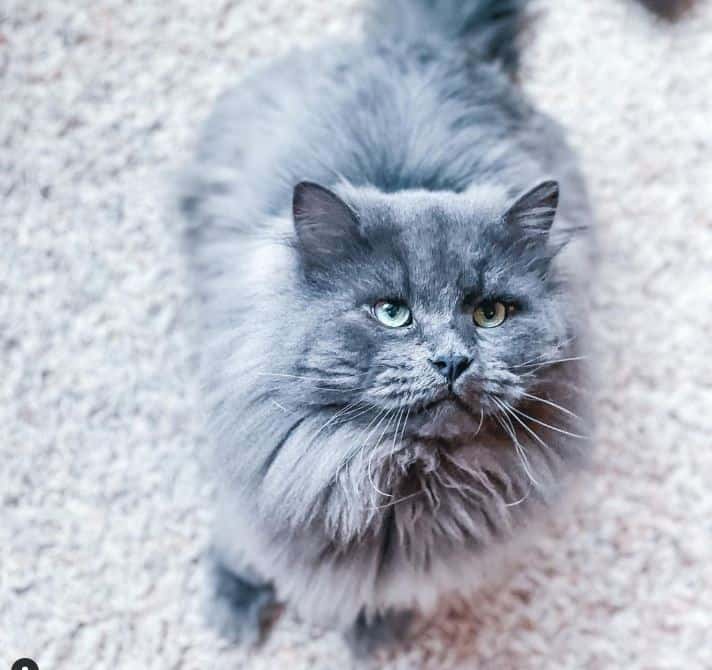
Siberian cats are not cheap, but grey Siberian cats are usually cheaper than most other colors. The reason for this is that they’re not as rare as some other colors. Nevertheless, because Siberian cat breeders are not all that common expect to pay around $1000 to $4000 for a Purebred Grey Siberian Kitten.
A good place to start your search is usually the CFA’s website’s breeder search function. There you can find Siberian cat breeders that offer pedigreed kittens for sale. These kittens should come with all the proper paperwork included.
Alternatively, you can also look for Siberian cat breeders on other websites. Good places to find a reputable breeder are Facebook groups, Craigslist, or Gumtree. However, do exercise caution when buying from these platforms. There are some shady cat breeders active on these platforms that do not take proper care of the cats and kittens they raise. Always look for testimonials from previous customers and make sure to do your research.
Grey Siberian Cat Appearance
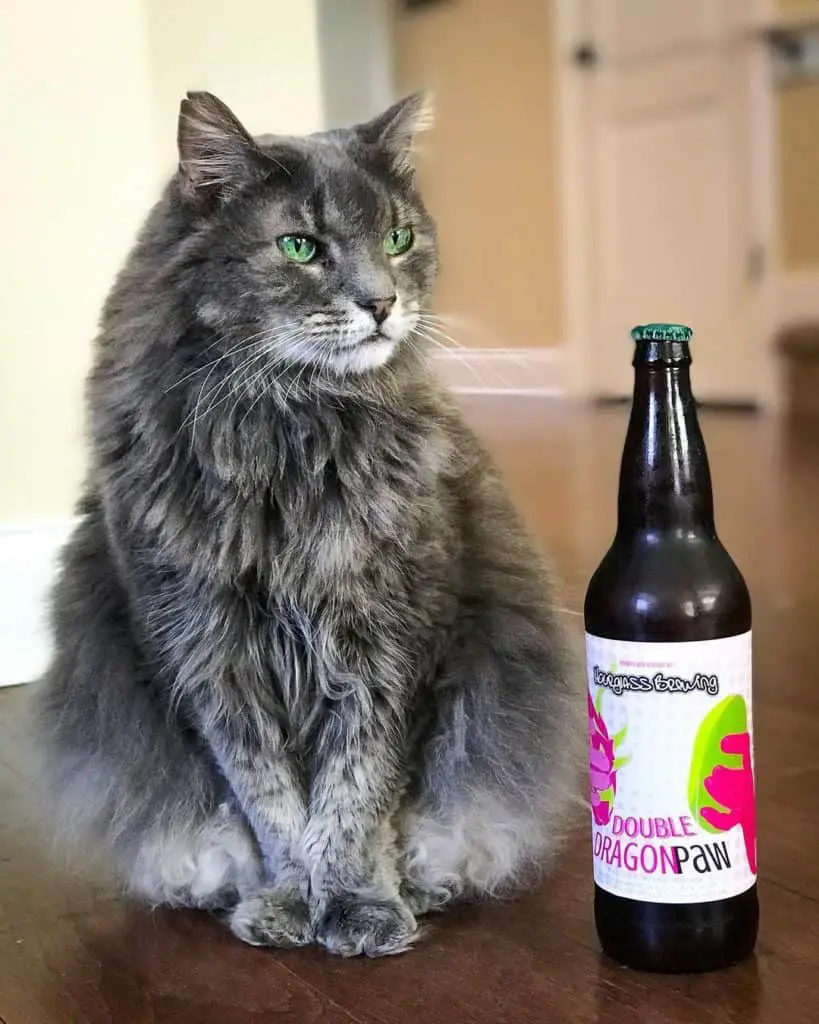
A cat’s size is not affected by the color of its coat. It is, however, affected by the cat’s breed.
Siberian cats are quite large. They’re among the biggest domesticated cats with a weight of up to 17 pounds and have an average length of around 17 to 25 inches. Males are slightly larger than females.
Because of its thick, long, fur, the Siberian has a very regal appearance. They have this thick fur because they’re native to the forests of Siberia in Russia where temperatures are very cold in the winter. Their coat offers them excellent protection against these freezing temperatures. In the spring, when temperatures rise, the Siberian sheds a lot of their coat.
In addition, these big cats have a muscular body, a very furry tail, and big paws that allow them to walk on the snowy forest ground.
Grey Siberian cats often have green, gold, copper, or green-gold eyes that sit in their head which looks like a modified wedge with rounded contours. Their head is broad at the top, narrowing slightly at the muzzle. Their ears are medium-large and are beautifully furnished with tufts of fur.
Other Siberian Cat Colors
Siberian cats come in many different colors. The solid colors they can come in are white, black, red (orange), cream, and blue. However, they can also be tabby, calico, tortoiseshell, and many other colors.
Grey Siberian Cat videos
I have put many photos of Grey Siberian cats in this article. However, if you want to get a proper idea of what these beautiful animals really look like I suggest taking a look at these videos:
Grey Siberian Cat names
So, now you know pretty much everything there’s to know about the beautiful grey Siberian cat. If this article has convinced you that a Grey Siberian is something you need in your life you will of course need to give it a name. Here are some name ideas for your Grey Siberian cat to get you started:
- Gandalf
- Ash
- Dusty
- Earl
- Grayson
- Smokey
- Shadow
- Luna
- Pepper
- Mouse
Conclusion
The Grey Siberian Cat, while not as rare as other colors, is a magnificently beautiful creature that deserves our admiration. Officially, grey Siberian cats are not recognized as a distinct color, fancier’s such as the CFA refer to them as being “blue” rather than “grey”.
If you’re looking for a cat that’s affectionate, playful, and a great family cat, this breed might be exactly what you’re looking for.
- How Long Do American Eskimo Dogs Live? Important Factors and Care Tips - September 29, 2023
- Do American Bulldogs Need Grooming? Essential Tips and Care Guidelines - September 29, 2023
- Do Bengal Cats Enjoy Playing? Essential Tips for Keeping Them Active - September 29, 2023